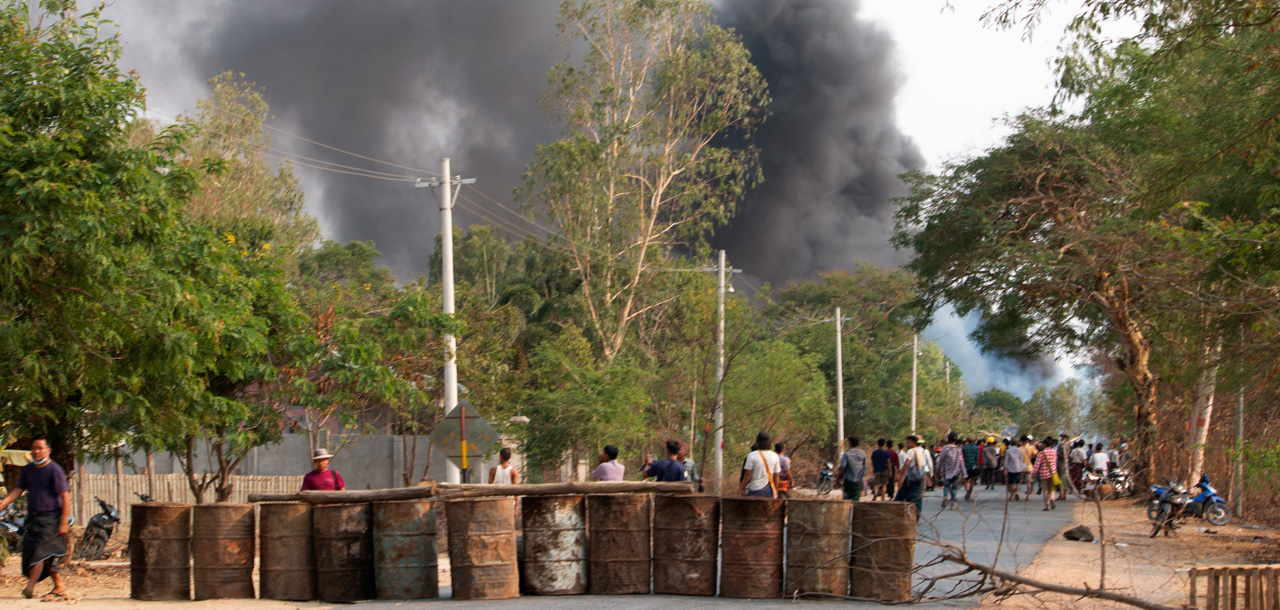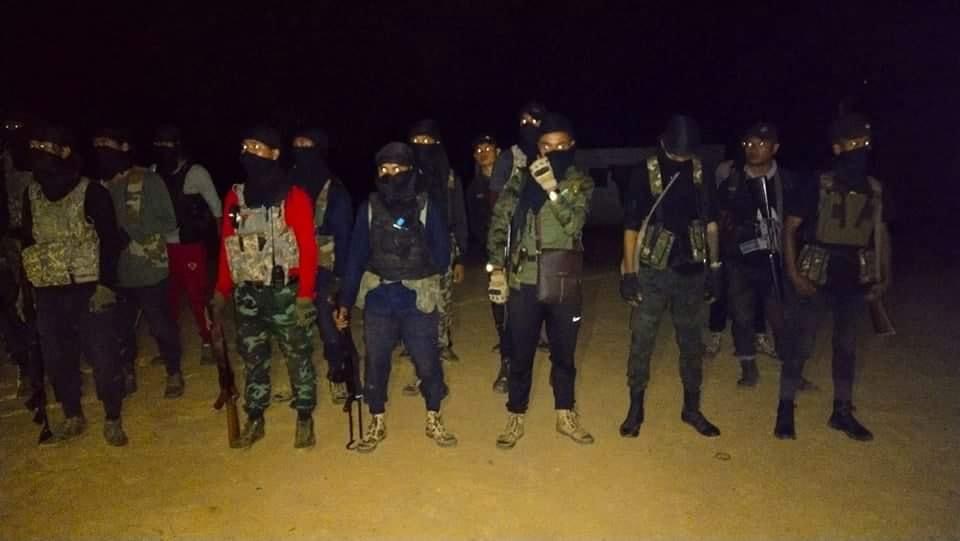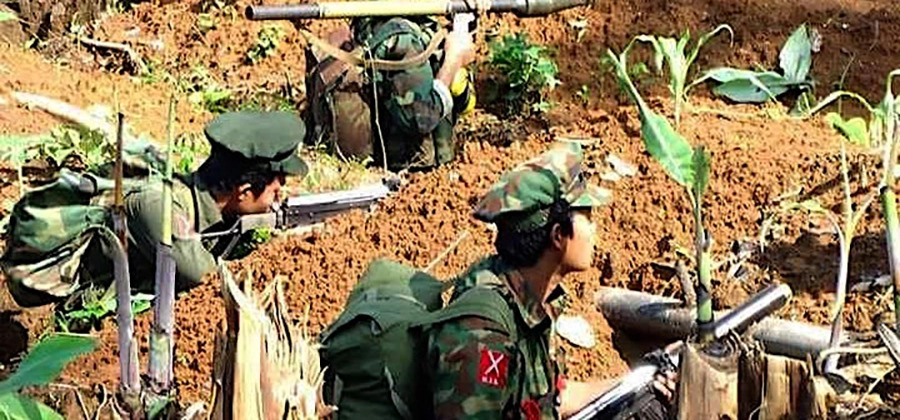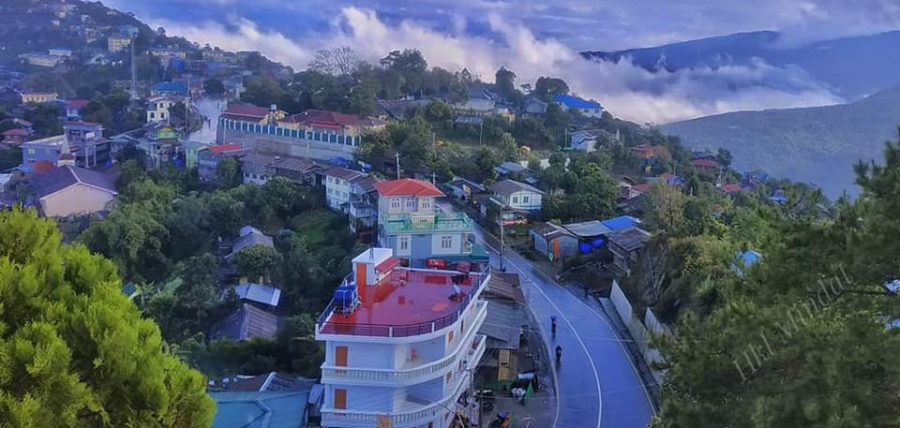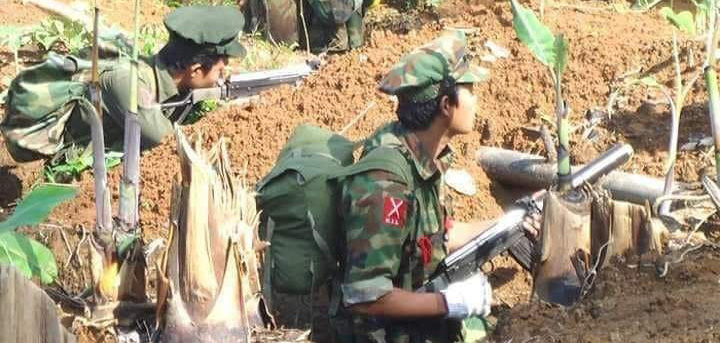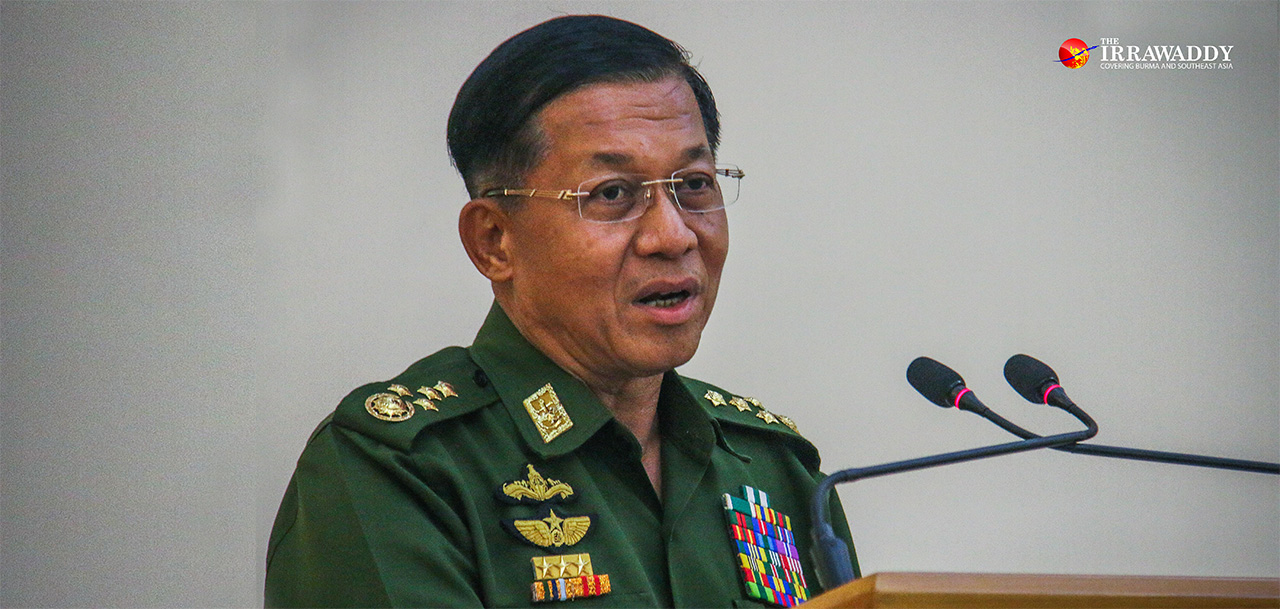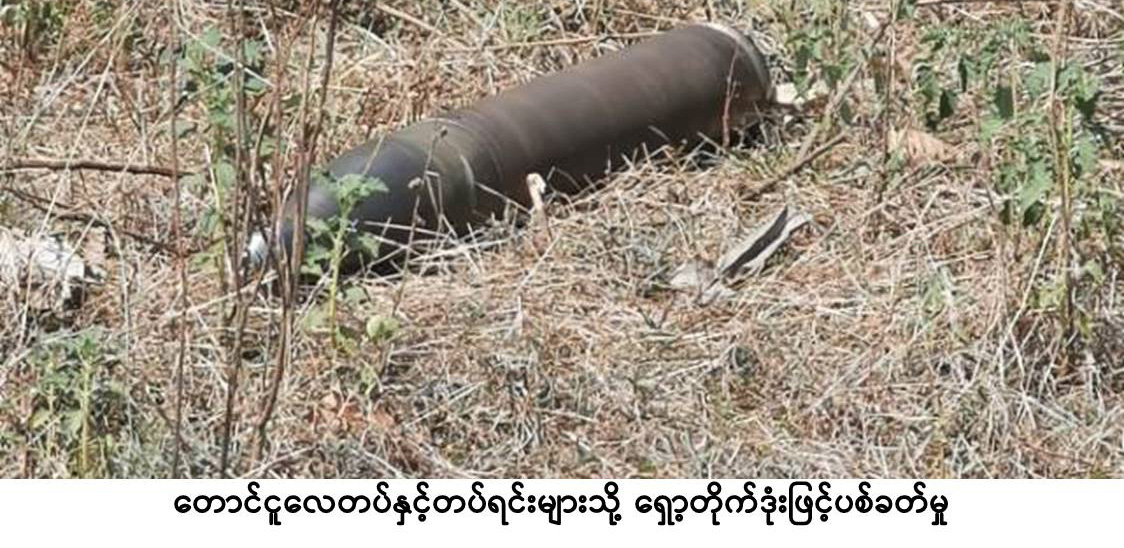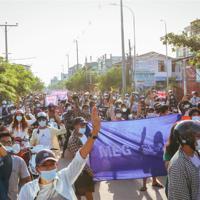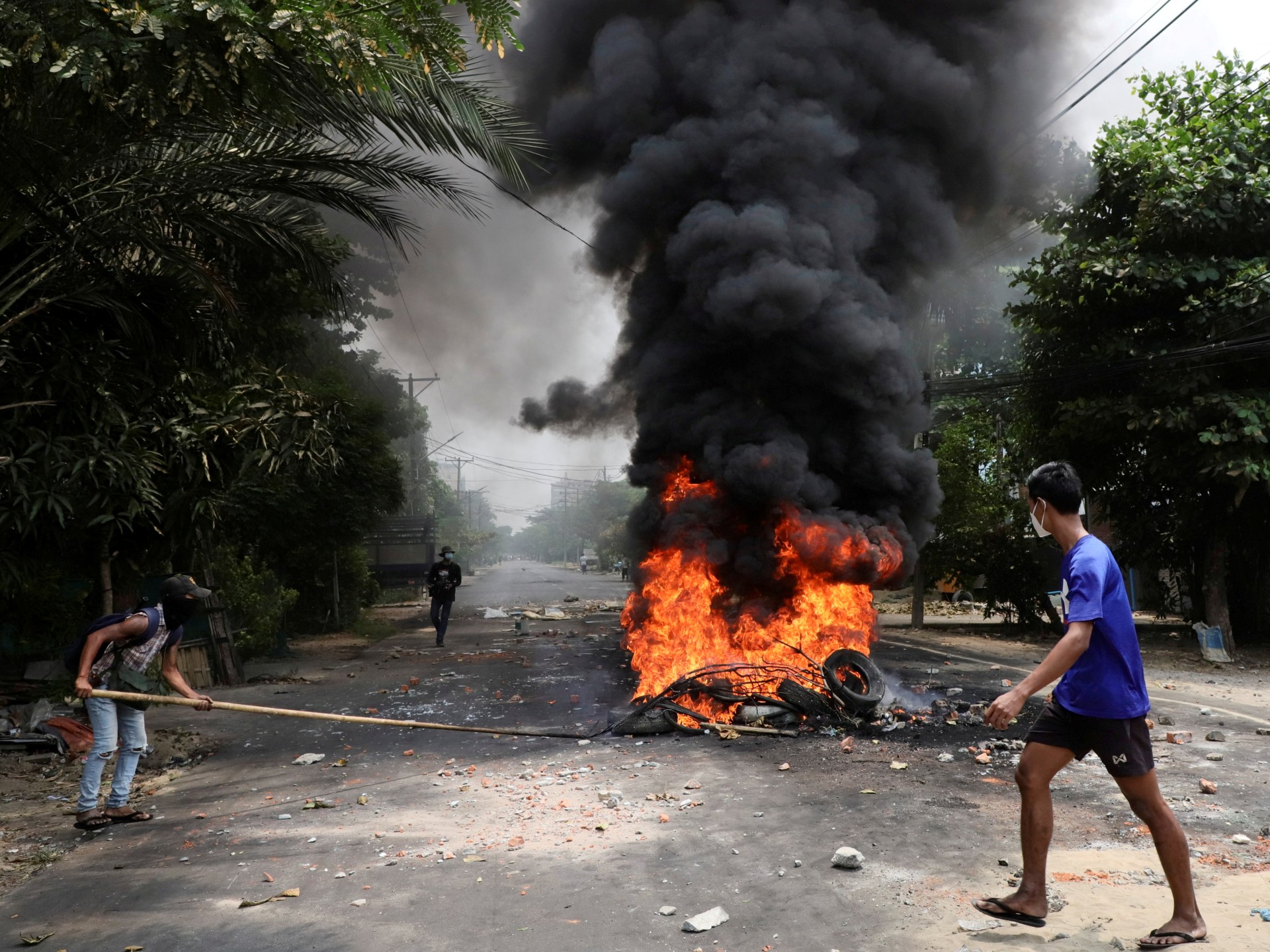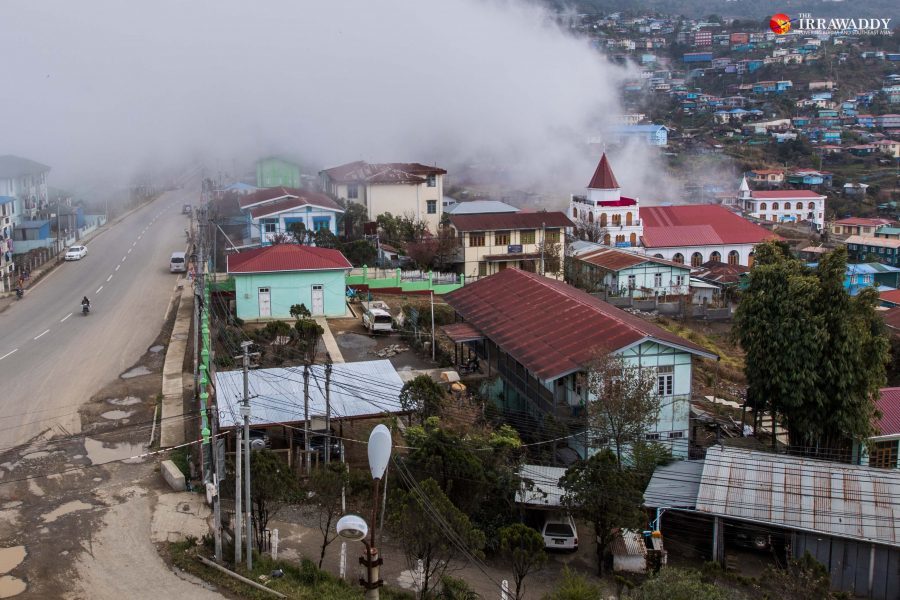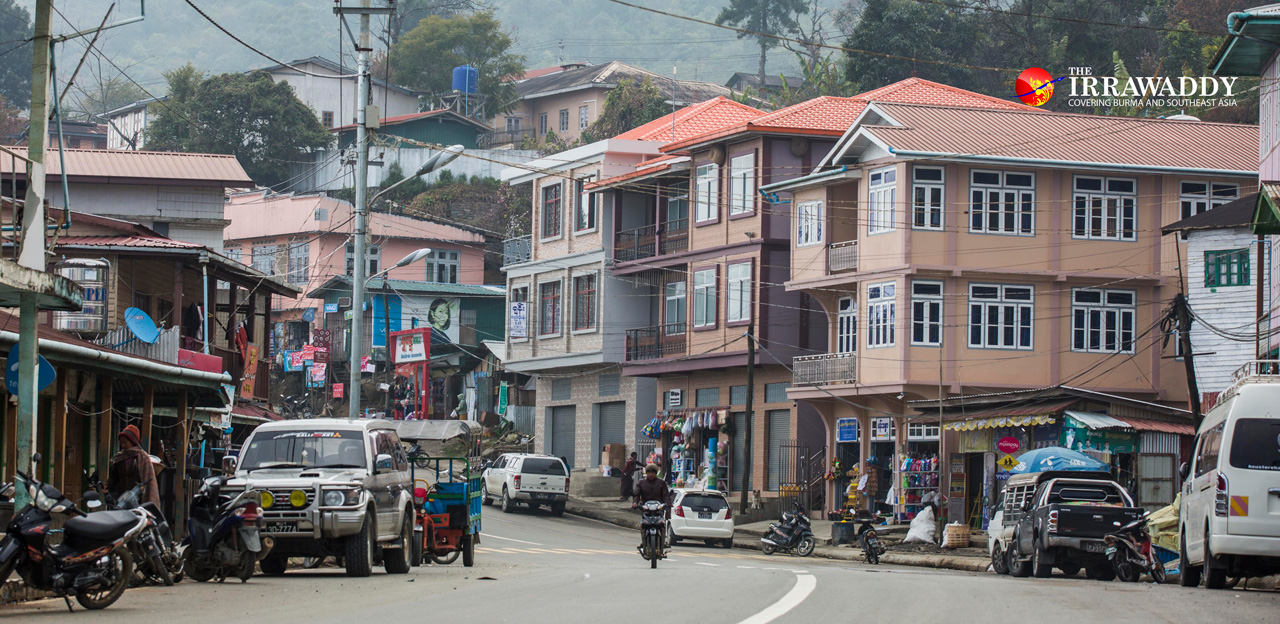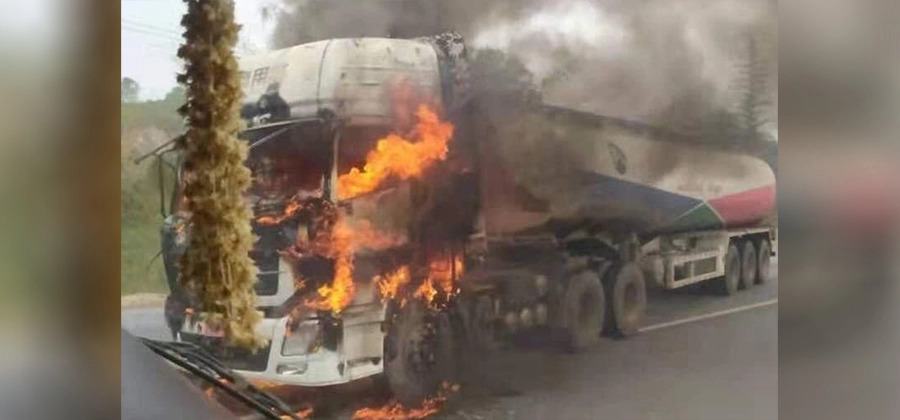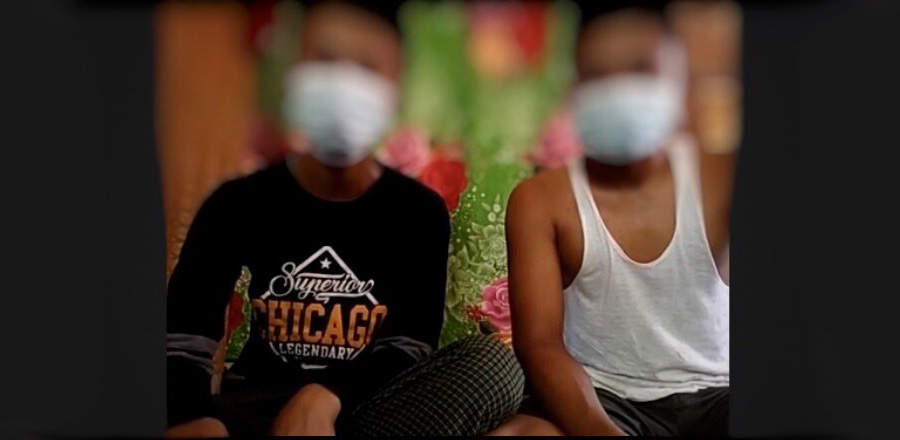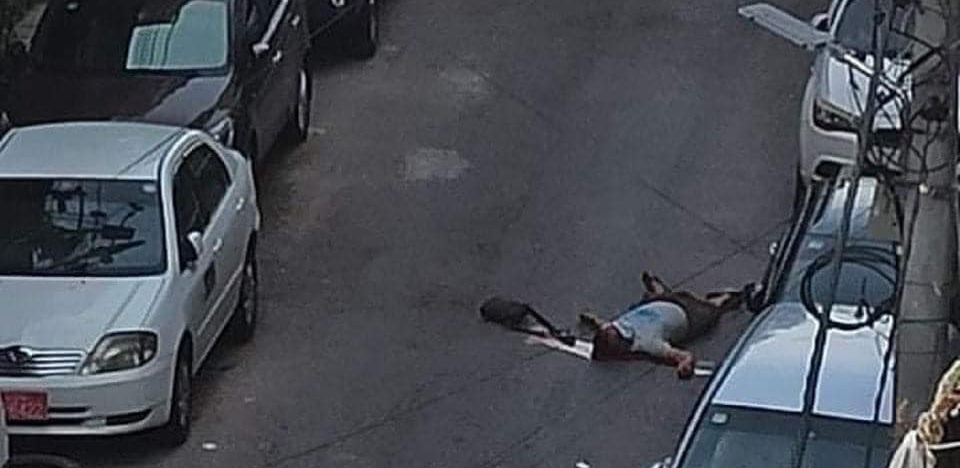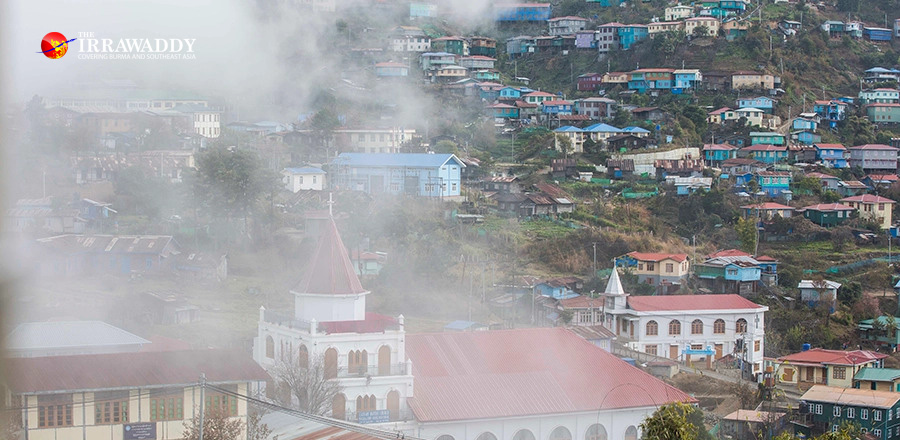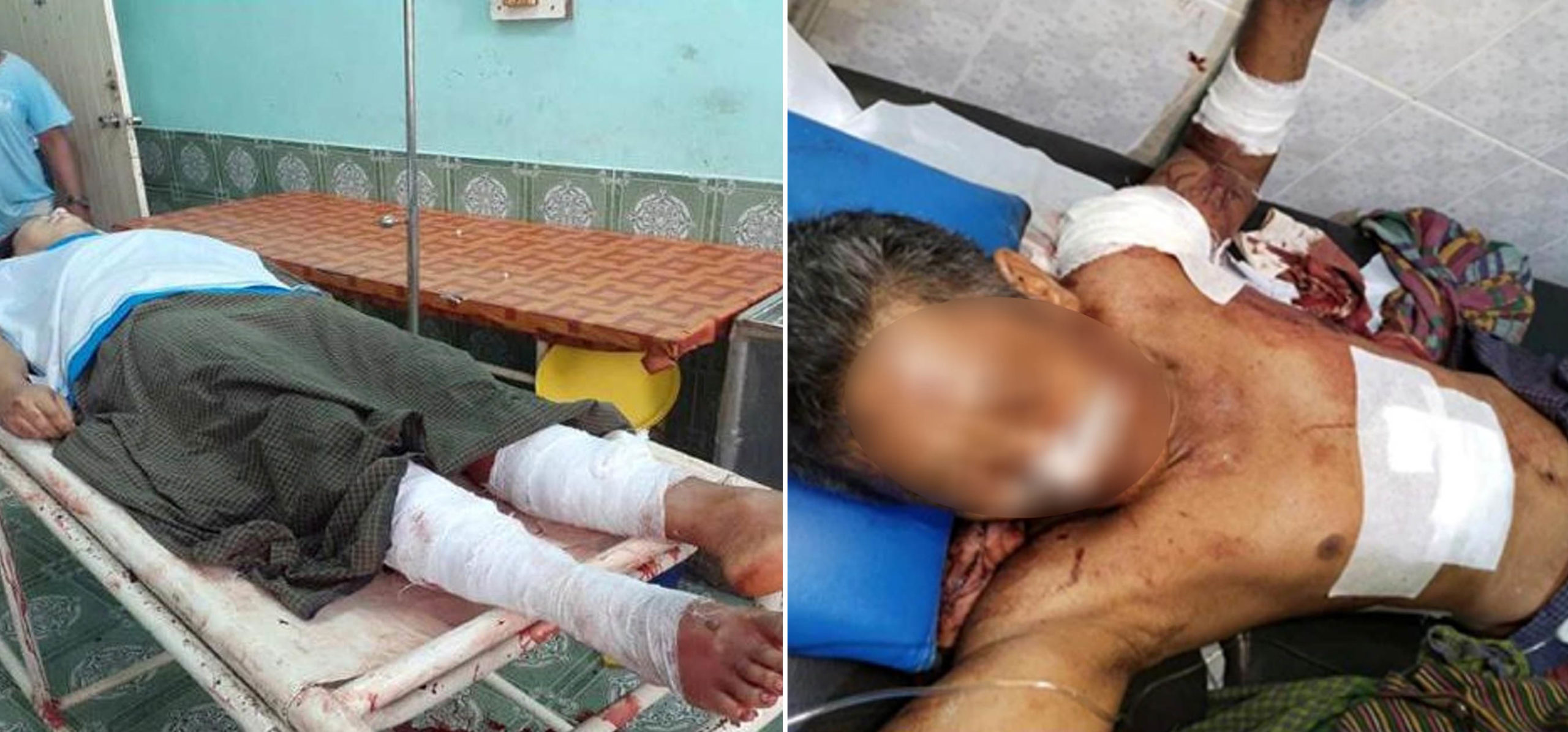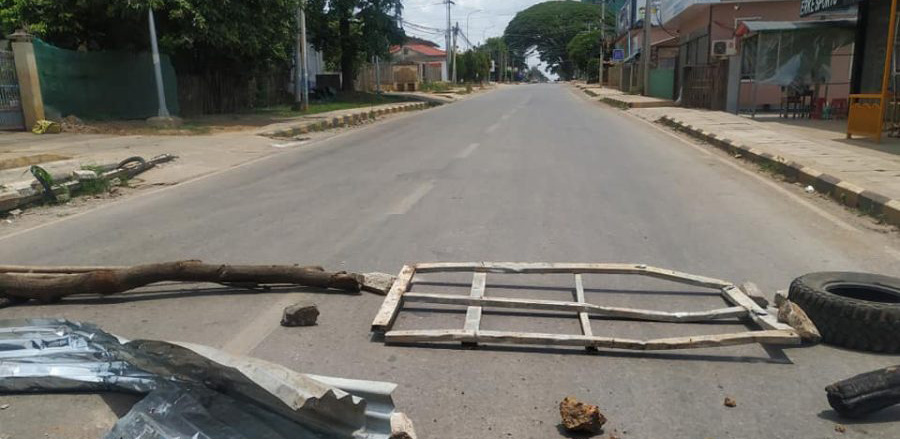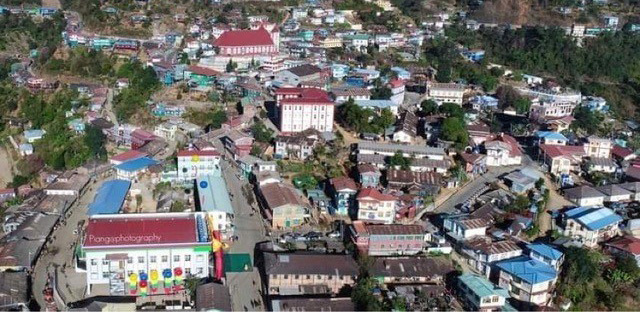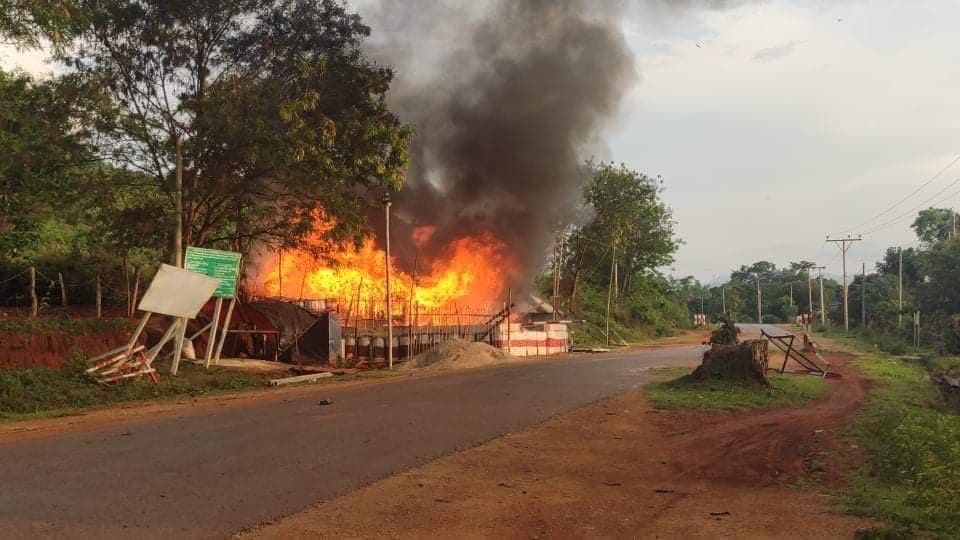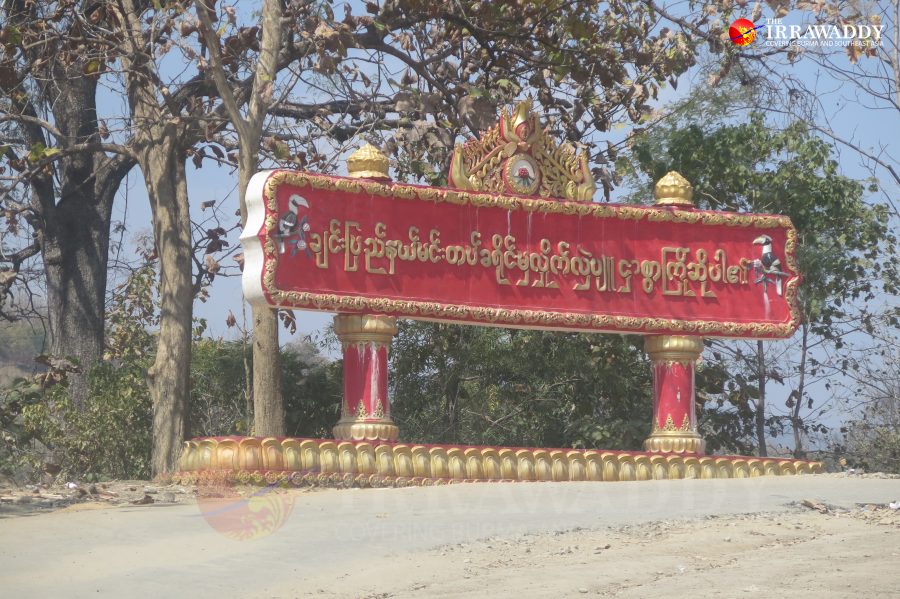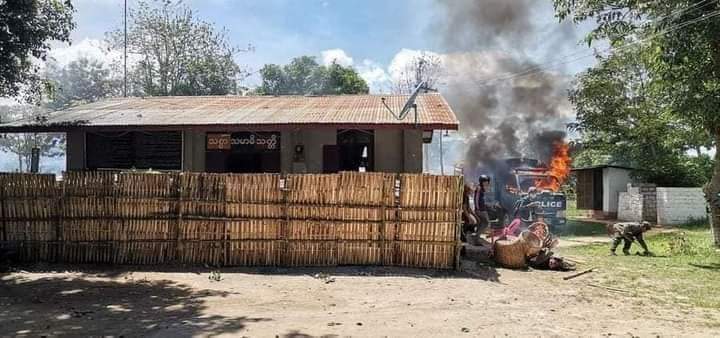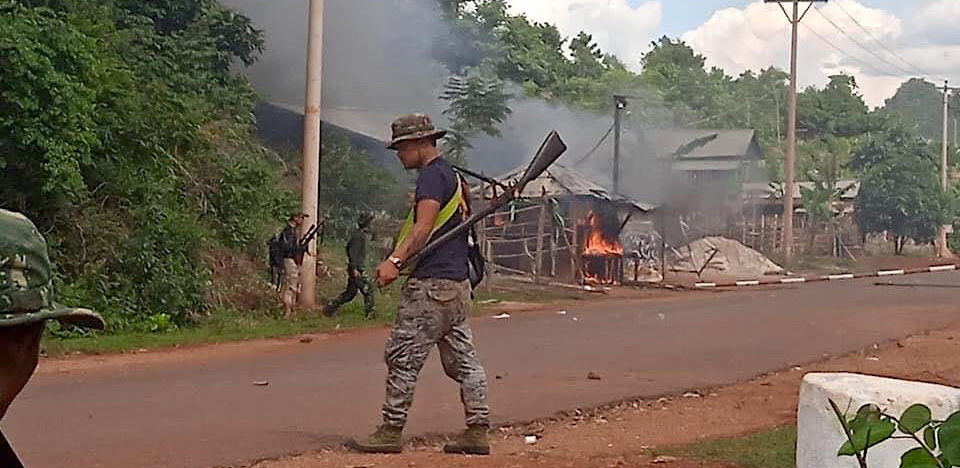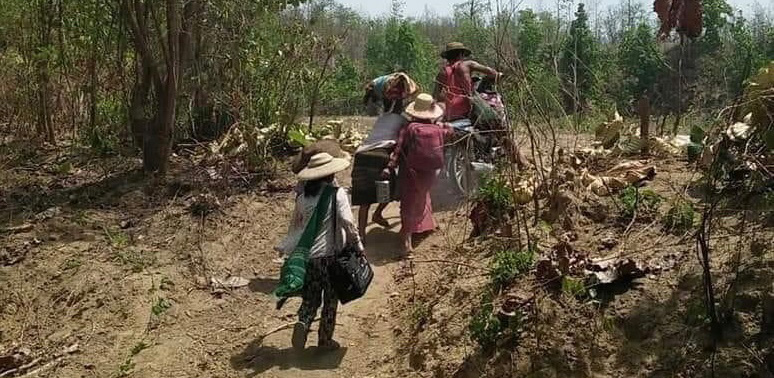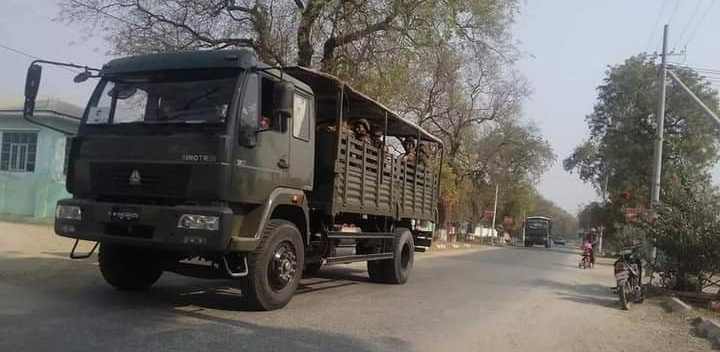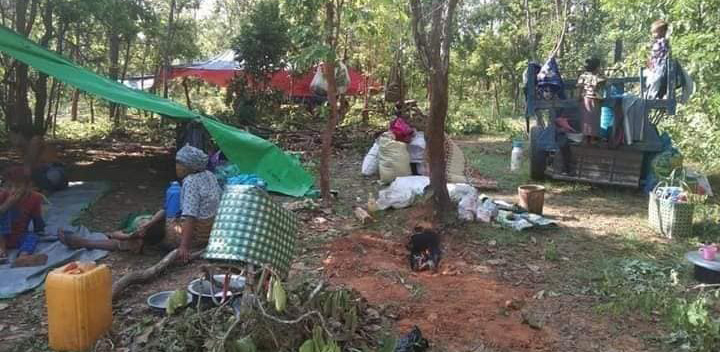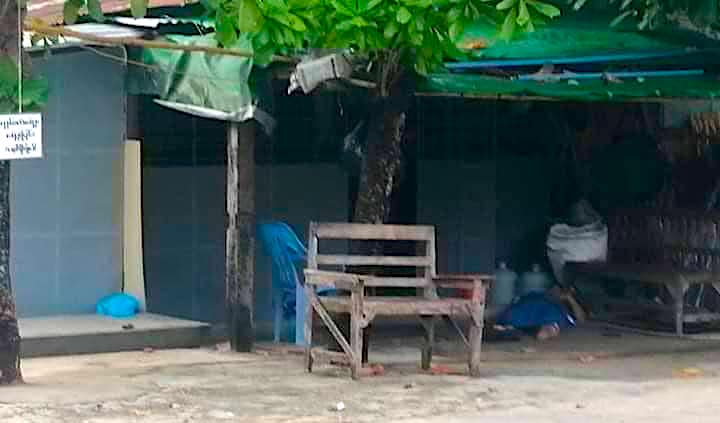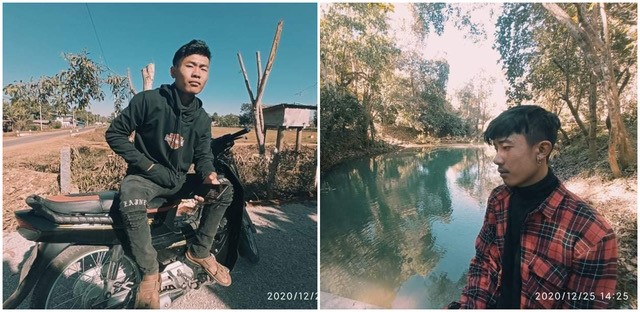Armed Revolution Spreads in Myanmar's Central Regions and on Chin Hills
Unable to tolerate the violence of Myanmar’s military regime which has killed some 800 people since the Feb. 1 coup, ordinary citizens have taken up any weapons available—from air guns to traditional firearms and homemade bombs—and are fighting back the regime.
Since late March, people from Chin State and Sagaing, Magwe and Mandalay regions have repulsed the military regime’s troops.
Civilian resistance fighters rarely have access to modern weapons, and most of them only have traditional firearms used in hunting. Despite the fact that they only have 19th Century weapons, they have killed and injured dozens of junta troops.
“As the number of casualties has significantly increased while we were staging protests, we thought we have to put up armed resistance if we are to win our fight for democracy. So, we took up arms,” said a resident of Sagaing’s Kale, one of the very first townships to present an armed resistance to the junta’s troops.
Besides their commitment to democracy, another factor that gives them an advantage is their knowledge of the terrain of those regions. Except for Mandalay and Magwe, Chin and western Sagaing are hilly areas with forests, posing logistical challenges to the regime.
In April, six junta troops were killed by local residents using percussion lock firearms in Tamu, a border town on the Myanmar-India border.
Having seen the power of percussion lock firearms, junta troops are now seizing them and are arresting and prosecuting those who keep them.
Armed Revolution begins in Kale
Though Kale is seeing only guerilla-style home-made bomb attacks recently, the town in Sagaing Region was the first in Myanmar to put up armed resistance against the military regime with traditional firearms during Spring Revolution.
The town took up arms when an anti-regime protester was shot by junta forces on March 2, and died the following days. Locals then set up barricades and protest camps, resisting the regime troops with air guns and traditional firearms.
Junta forces attacked the protest camp in Kale’s Tar Han ward on March 28, shooting anyone on sight. At least five civilian resistance fighters died in the attack and dozens were arrested. Since then, Kale residents have carried out guerilla-style attacks on junta troops, also intercepting reinforcements sent to the town.
Clashes were the fiercest in late March and early April. Young local people formed the Kale Civil Army to repulse the junta troops. However, the resistance was largely crushed after dozens of youths were arrested after April 7.
Thus far, some 30 young resistance fighters have died and more than 30 others are being detained. The military junta has also deployed large numbers of troops in Kale and the adjacent towns of Tamu and Gangaw.
Armed resistance spreads to Yinmarbin and Kani in Sagaing
Junta forces raided Thabyay Aye village in Sagaing’s Yinmarbin Township on April 2. Their target was the abbot of the village monastery, who had been at the frontline of anti-regime protests in the town.
Locals repulsed the raid with their traditional firearms. Junta forces retreated after suffering heavy casualties. On April 15, junta forces returned to Yinmarbin, with larger numbers of troops and more lethal weapons this time.
Villagers from several villages were forced to flee. Junta forces searched for percussion lock firearms house by house and villagers holding firearms were arrested. There were shootouts between local resistance fighters and junta forces until April 20 in Yinmarbin, with both sides suffering casualties. Locals from nearby villages in Kani and Mingin townships rendered help as residents in Yinmarbin were attacked.
On April 15, local resistance fighters were patrolling on Monywa-Kalewa road when a vehicle refused to stop and drove away. As they chased the vehicle, a Myanmar military major who was behind the wheel shot them before running into the forest. Locals then set the vehicle on fire.
Then, junta troops based in Monywa came down to Kani, leading to clashes with local resistance fighters.
Local resistance fighters in Kani have carried out guerilla-style attacks on junta forces. There were eight attacks on May 6 and 7 in which 16 junta troops and seven civilian resistance fighters died, according to local residents.
Junta forces also carried out attacks, using drones to search for civilian resistance fighters hiding in forests and attacking them with explosives. They also forced villagers to guide them to hideouts of resistance fighters in the forests.
Those raids have forced over 13,000 people from more than 20 villages in Kani to flee into the forests. Between May 8 and May 12, junta forces arrested more than 40 villagers including 12 civilian resistance fighters.
“All of this was triggered by the military regime. They arrested and used live rounds on peaceful protesters. They attempted to arrest the abbot. And they attacked the locals who are providing security for their regions. And finally, they bullied us with weapons,” said a Monywa resident.
Both sides suffered casualties in armed clashes, and dozens of local residents were arrested. Junta troops, as they have before in Myanmar’s ethnic states, looted livestock and food from villagers. They also tortured some of the residents.
Not only Kale, Kani and Yinmarbin, but also Tamu, Taze, Pale, Salingyi, Mingin and Pinlebu townships in Sagaing Region are mounting armed resistance against the military regime.
In the attacks in Tamu on April 2, six junta troops and a striking police officer died. Some houses and a bridge were burned.
In Taze, hundreds of thousands of people had gathered daily against the regime. On April 7, locals intercepted some 300 junta forces who had come to disperse the protest. Twelve locals died in the shootout and more than 20 were wounded.
On May 10, civilian resistance fighters in Taze ambushed some 60 junta troops on their return from transporting prisoners to a labor camp in Maha Myaing Forest. Two junta troops died and some were wounded.
People in Sagaing resisted the regime on their own volition and were not initially linked with Committee Representing Pyidaungsu Hluttaw (CRPH), a body representing elected lawmakers of 2020 general elections, and the National Unity Government (NUG), a shadow government formed by the CRPH to rival the military regime.
On May 11, more than 100 junta troops attempted to enter Talokmyo village-tract in Myingyan Township, Mandalay Region, and found themselves fighting with local residents.
In the evening, about 400 more soldiers from Myingyan, Taungtha and Natoegyi arrived and opened fire on the villages until 1 a.m. on May 12. Junta troops took control of the villages early on the morning of May 12. Three junta troops died and several others were wounded in the shootouts. Nearly 100 villagers including six university students from Myingyan who were at Talokmyo helping the villagers were arrested.
Armed resistance on Chin Hills
In Chin State, armed resistance has mainly taken place in Mindat and Hakha. Seven anti-regime protesters were arrested in Mindat on April 24, and a shootout occurred when police refused to release them later that evening. Three policemen died in the incident.
Civilian resistance fighters attacked a military convoy on April 26 in Mindat. Junta forces arrived for retaliation the following day but suffered heavier casualties than the civilian side. The military council then suspended attacks and released the detained protesters.
“We have been undergoing intensive military training. Because they can attack us anytime, we have prepared ourselves to fight back. We are resisting not because we have weapons. We are resisting because we have faith,” said a Mindat resident.
Members of the Mindat defense force said they have started to work together with the CRPH and the NUG, and will be able to have greater bargaining power over the military regime if they receive weapons from People’s Defense Force formed by the NUG.
“They might not have thought people would take up arms against them. We people have shown many times that we deserve democracy. As they don’t restore what we deserve, we will take it back using any means. People have chosen to take up arms,” said a civilian resistance fighter from Mindat.
At least ten junta troops died in the fighting with local resistance fighters from May2 to May 4 in Chin State’s Hakha.
Since Wednesday evening, the shootouts between the military troops and Midat Defense Forces have resumed, after their ceasefire agreement broke down.
The ceasefire collapsed because the military regime failed to release all five detainees in exchange for 17 vehicles carrying around 270 junta troops being allowed to pass through from Matupi Township.
During the clashes, an ethnic Chin teenager was killed and six other members of Chin State’s civilian resistance forces were injured when the junta bombarded the resistance town from nearby Kyaukhtu Town in Magwe Region on Thursday. On the same day, the regime declared Mindat under marital law, heralding possible future crackdowns.
The CRPH said on March 14 that people have the rights to defend themselves when they are attacked by the military regime. Any response made by individuals or wards or villages or townships to defend their lives will not constitute crimes, said the CRPH.
In retaliation, the regime on Saturday declared the CRPH, NUG, PDF and their affiliated local defense teams to be terrorist organizations.
‘We are resisting because we have faith,’ said a resident of Mindat, where local fighters are defying the regime’s artillery, mostly with rudimentary hunting rifles.

www.irrawaddy.com
